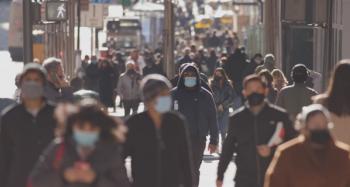
Long COVID More Likely to Impact Patients With Severe Disease
Patients who were bedridden for 7 days or longer had the highest prevalence of symptoms, which included fatigue, shortness of breath, chest pain, dizziness, and trouble sleeping.
Patients with COVID-19 who suffered from severe illness and were bedridden are more likely to experience physical Long COVID symptoms up to 2 years after their diagnosis, according to new data published in The Lancet Regional Health Europe.1
Although the COVID-19 pandemic is no longer considered an emergency, the disease’s burden on public health is still a serious issue. An estimated 10% to 20% of people infected with COVID-19 will continue to experience different symptoms, which is known as Long COVID. While Long COVID is now well documented, there is a lack of studies examining these patients 1 year after diagnosis.
“Long COVID has grown into a major public health problem since a large proportion of the global population has been infected,” Emily Joyce, a first author on the study, said in a release.2 “Our results show the long-term health consequences of the pandemic and highlight the importance of monitoring physical symptoms for up to two years after diagnosis, especially in people who experienced severe COVID-19.”
Investigators from several universities in Europe, in collaboration with the Karolinska Institutet, conducted an observational study to assess the prevalence of physical symptoms in relation to acute illness severity up to more than 2-years after diagnosis of COVID-19. Data was gathered from Iceland, Sweden, Denmark, and Norway between April 2020 and August 2022.
The study cohort included 64880 adults with or without COVID-19 who took the self-reported Patient Health Questionnaire, which assesses the prevalence of 15 different physical symptoms, including stomach pain, headache, shortness of breath, and chest pain. Patients were compared by disease severity and time since diagnosis.
Investigators found that patients who were diagnosed with COVID-19 had a 37% higher chance of severe physical symptom burden compared to those who were not diagnosed. Patients who were bedridden for 7 days or longer had the highest prevalence of symptoms, while those who were not bedridden had a similar prevalence as those who were never diagnosed.
Additionally, 8 of the 15 symptoms were statistically significantly higher among those diagnosed with COVID-19. These included fatigue, shortness of breath, chest pain, dizziness, heart racing, headaches, trouble sleeping, and back pain.
Study limitations include that the study relies on self-reported information, that patients with COVID-19 may be more prone to report symptoms compared to those without a diagnosis, and the varying time periods in which the information was collected.
“We’ll continue to assess the long-term health impact of the COVID-19 pandemic in this project,” Qing Shen, a corresponding author on the study, said in a release.2 “Multiple projects are underway, including studies of how COVID-19 has affected cognitive function and mental health, and how social isolation affected the elderly.”
References
1. Shen Q, Joyce EE, Ebrahimi OV, et al. Covid-19 illness severity and 2-year prevalence of physical symptoms: An observational study in Iceland, Sweden, Norway and Denmark. Lancet Reg Health Eur. Published online 2023. doi:10.1101/2023.04.18.23288720
2. Long COVID most prevalent in the most seriously ill. News Release. Karolinska Institutet. October 27. 2023. Accessed October 27, 2023. https://news.ki.se/long-covid-most-prevalent-in-the-most-seriously-ill
Newsletter
Pharmacy practice is always changing. Stay ahead of the curve with the Drug Topics newsletter and get the latest drug information, industry trends, and patient care tips.





























































































































